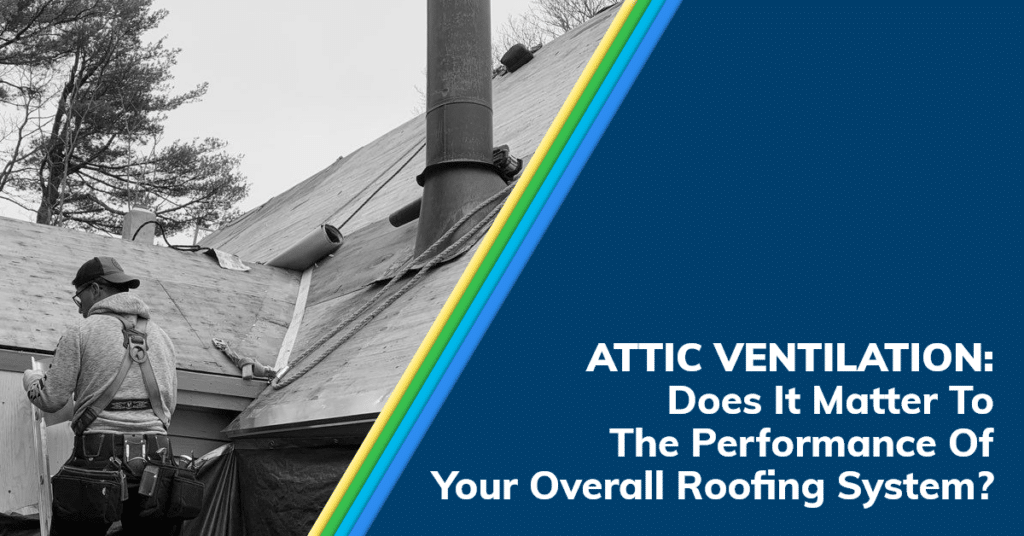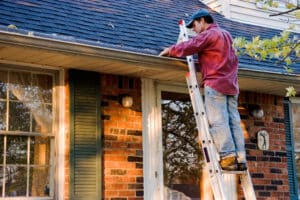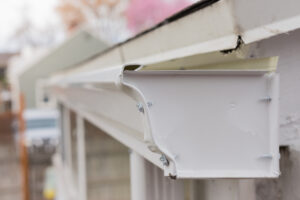For your roof to perform well, the materials need to be in good condition. The roof also needs to be well insulated, and the gutters need to be in good shape. Most homeowners are aware of these things. However, another component of residential roof health that you may not be aware of is attic ventilation.
“Ventilation” refers to the air flowing in and out of a space. When an area is well-ventilated, it receives plenty of airflow. Roofs are therefore built with vents to allow airflow through the attic space. These vents affect not only the temperature and humidity in your attic but also the performance of your roof.
Types of Roof Vents
There are a few different types of vents that roofers can install. Roofers select vents based on the shape and design of your roof.
Ridge vents are long vents placed along the ridge of a roof. Hot air rises, so the air near the roof peak or ridge is usually quite warm. A ridge vent allows this hot air to escape, which helps keep the attic cool.
Soffit vents are vents placed under the soffits or eaves. This is the area where the air in the attic is the coolest. So, soffit vents allow cool air to flow into your attic. They’re typically paired with a ridge vent. Hot air flows out of the ridge vent, and fresh, cool air comes in through the soffit vents to replace it.
Box vents are square or rectangular vents that can technically be installed anywhere along the roof’s surface. The roofer cuts a hole out of the roof and pops in a vent. Box vents are usually placed closer to the peak, so hot air can escape through them.
Attic fans can be used for improved airflow. Some roofs are not designed for good, natural airflow and need this boost. The fan pulls hot air up towards the peak of the roof and blows it out.
Consequences of Inadequate Ventilation
So, what happens if a roof is not well-ventilated? The consequences may not be obvious right away. But, over time, four key things tend to happen to poorly ventilated roofs.
Shingle Damage
If the heat in your attic can’t escape through a vent, it will pass right through the roof itself. This is hard on your shingles. Eventually, it may cause them to start curling, cracking, and deteriorating prematurely. This is often most prevalent near the roof peak, where the most heat escapes.
In colder climates, you may notice a lot of shingle damage near the edge of the roof. This is caused by ice dams. Ice dams form when the snow melts near the warm peak of the roof, trickles down and then freezes on the cooler roof edge. The ice pries the shingles up from the roof deck and can also cause them to crack. Good ventilation prevents ice dams and protects the shingles along your roof’s edge.
Mold in the Attic
Without good ventilation, your attic will be a really warm, moist place. Mold loves warm, moist places. Unfortunately, once you get mold in the attic, it can be tough to get rid of. Many homeowners end up having to strip out and replace their insulation. You never want to ignore mold because it can cause sickness and allergy symptoms. A good attic vent system will keep the space dry, cool, and less appealing to moldy invaders.
High Energy Bills
In the summer, poor attic ventilation can lead to sky-high energy bills. Some of the heat that builds up in your attic will travel through the attic floor and heat the upstairs of your home. Your AC will need to work overtime to keep the space cool, which will cause your energy bills to rise.
Roof Deck Damage
Eventually, if poor ventilation is not addressed, your home may develop roof deck problems. Damaged shingles can allow water to seep past them, moistening the roof deck. Sustained high humidity in the attic can also cause the roof deck to start molding and rotting.
A damaged roof deck is difficult to address without a full roof replacement. So, it’s wise to contact your roofer if you notice any of these earlier signs of poor roof ventilation:
- Ice dams
- A hot and humid attic
- Moldy attic insulation
- Premature shingle damage
- Rusting hardware in the attic
It’s easier to have a roofer add a few more vents than it is to have your roof deck replaced.
A well-vented roof is a strong roof. If you’re looking for a roofer to inspect your vent system or add more vents, contact Adam Vaillancourt Roofing. Our friendly, knowledgeable roofers can recommend the best solutions for your home. We offer services throughout the Southern New Hampshire and Northern Massachusetts areas.




